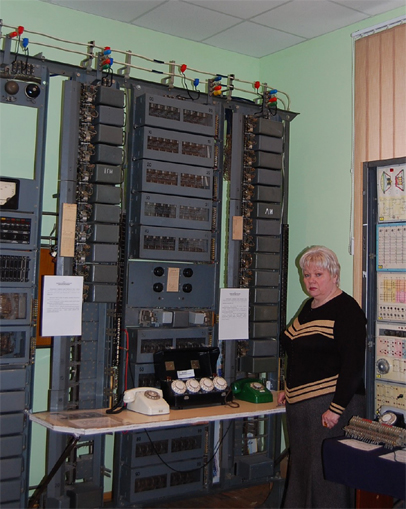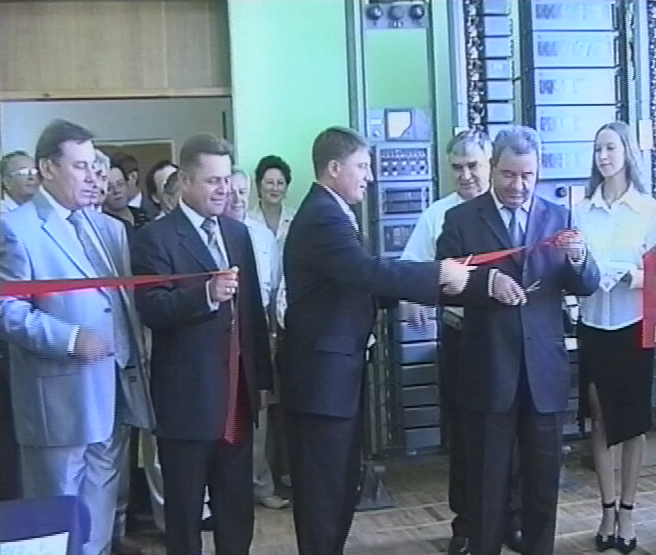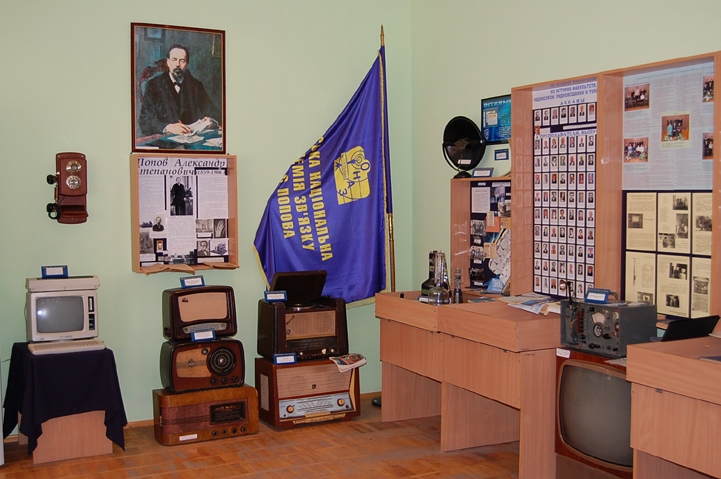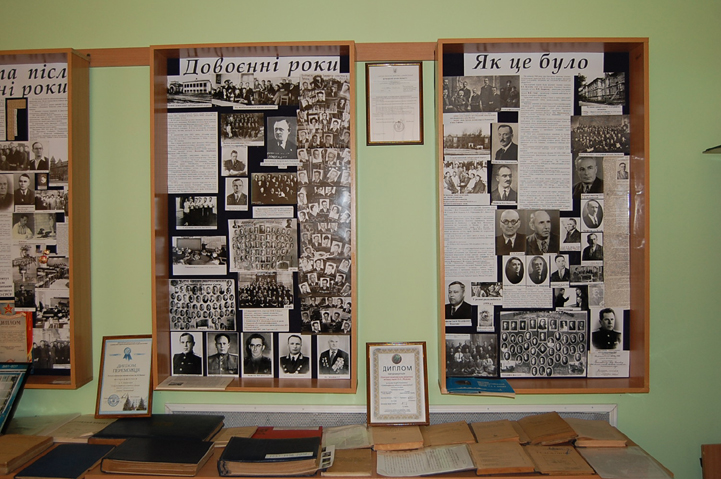ACADEMY MUSEUM
Communication is one of the oldest branches of engineering. It is impossible to overestimate the role of communication in the life of human society, which since its inception has a need for exchange of information.
Change of conditions of life and work of people inevitably led to a change in the means of communication, their technical perfection.
|
The Head of the museum of the ONAT Nikitina V.I |
The A.S. Popov ONAT is a leading higher educational establishment of Ukraine, which trains specialists of the branch of communication in all the categories, and directions.
Chronicle of one of the oldest universities of the country begins in the distant 1920, when, in the process of research, a direct continuity in the training of operators was established from the Odessa higher college electronics and communications, named after Gregory Grinko (1920), to the Odessa institute of communications engineers, created in 1930. This is a great historical period: the academy of communication grew together with the whole country, and created its unique history. Realising the importance of preserving the history of the previous generations of telecommunications workers of native university, Rector of the ONAT Peter Petrovich Vorobiyenko in 2005 adopted a decision on the establishment of the Museum of the Academy. The head of the museum has been appointed the head of the Center of humanitarian education and development Nikitina Valentina Ivanovna.
The workers-veterans in the field of communication have taken active participation in the work on search of archival documents, materials and exhibits in the sphere of communications. Families of the veterans of communication, who passed, have been sharing their awards, documents, photos, ancient receivers and devices with the museum.
Substantial assistance in the creation of expositions of the Museum and providing it with precious materials and historical documents, which had been carefully collected by a graduate of the university, an outstanding scientist Andrei Isaakovich Kogoot (1936-2003), who worked in the Academy in the period for 44 years, and was awarded a Gold medal All-union exhibition of achievements in national economy. He is the author of 68 foreign patents, and has 22 copyright certificates.
On September 10, 2005, in a solemn atmosphere in the main building of the ONAT in Kuznechnaya St, 1, the Museum of the ONAT was opened.
|
The solemn opening of the museum in the ONAT |
In two spacious halls of the Museum you can see the exhibits of the communications industry, a number of books and magazines, stands on the history of the university and its scientists and employees, who have made a substantial contribution to the development of this sphere and preparation of highly skilled specialists. All this became possible thanks to the efforts of the whole staff of the Academy, which throughout the history of existence of the university have been working for its future.
|
The first hall of the museum |
Along with the educational process the scientific-research work had been revived and actively expanded. We remember the creation of the scientific polygon in the country in 1959, which is situated on five acres of land and NIR "Meteor" under the direction of A.I. Khachaturov, where leading scientists of the Academy began their research activities.
Odessa residents and numerous guests of our city listen to music composed by I.A. Dunaevsky, which sounds from Odessa astronomical clock, created in the institute in 1959. The musical accompaniment of the chiming clock was a kind of a symbol of Odessa. The technical documentation and operating instructions were prepared by the engineer of the laboratory of instrumentation Kuznetsov Y.E., these documents are also kept in the museum of the Academy.
The photo album of the Educational-experimental television Center of Odessa and Electrotechnical institute of communications (OEIT), which is represented in the museum; the first experimental transmission of the Institution was in January, 6, 1952.
Throughout its history the institute has also paid much attention to physical education of the students. Victories in individual and team sport competitions of various ranks approved the outstanding sports glory of the institute. The received diplomas, certificates and cups are stored in the Museum ant tell a lot about these events.
However, the exposition includes not only photographs, books, albums and other materials, but also a large amount of equipment, which relates to the different branches of communication, connected with the general history of technology and exploitation of the means of communication.
Also exhibits on telegraphy, telephony, radio, and other equipment: various instruments, relevant to the development of the communication industry, are widely presented.
Among the exhibits the most popular are: a telegraph key (1929); telegraph Morse; the Soviet teletype (the sample of 1935), ST-35; educational-laboratory racks, developed on the departments of the university; the first radio with remote control "Festival" (1957), military secret radio stations and telephones (sample of 1944); fiber-optic cables of communication of the plant "Odessacabel", pre-war loudspeaker; the exposition of the radios from the private collection (since 1947.) is also interesting, and some others.
The great interest of our museum is particularly the fact that part of the exhibits is in working conditions, and we demonstrate their work: the ATS of 100 numbers (1950), the telephone produced in 1900, radios (1954), the recorder (1956).
The variety of the expositions of the Museum allows a deeper understanding of some issues of the history of the technology of communication in different historical periods and obtain information on the history of development and modern state of the main means of communication; we can also see some pictures of the people who have devoted themselves to this industry.
|
Stands on the history of the development of the University |
A lot of veterans and workers of communication, students of colleges and schools, as well as guests of the foreign countries (Azerbaijan, PRC, Kazakhstan, Russia, Slovenia, Armenia, Cambodia, etc.), visited the museum and left their notes in the book of reviews.
Photo albums are also issued in the museum; they are dedicated to some anniversary dates; from 2005 the chronicles of the academy are being recorded, which reflect the important and interesting events in the Academy, and also the electronic card file is being kept, constantly replenished the exposure. Several times, on TV channels of Odessa, reports about the ONAT museum were held. With the passage of time all modern technologies will inevitably become rarities. However, there are the old newspapers, magazines, summaries of lectures, scientific achievements, and the ancient exhibits from the field of communications, which are carefully stored in the museum.
The museum is, first of all, the people who worked tirelessly to install the connection everywhere and always. Today's generation of communications, having mastered computer technologies, with great interest and attention, learns in the museum about the past of communications and telecommunication with great interest.
The work on the search of documents and exhibits is continued.
The purposes of the ONAT Museum are to attract the young generation to the studying and preservation of the traditions of their predecessors, and education of pride for the glorious history of their Alma Mater.
|
|













